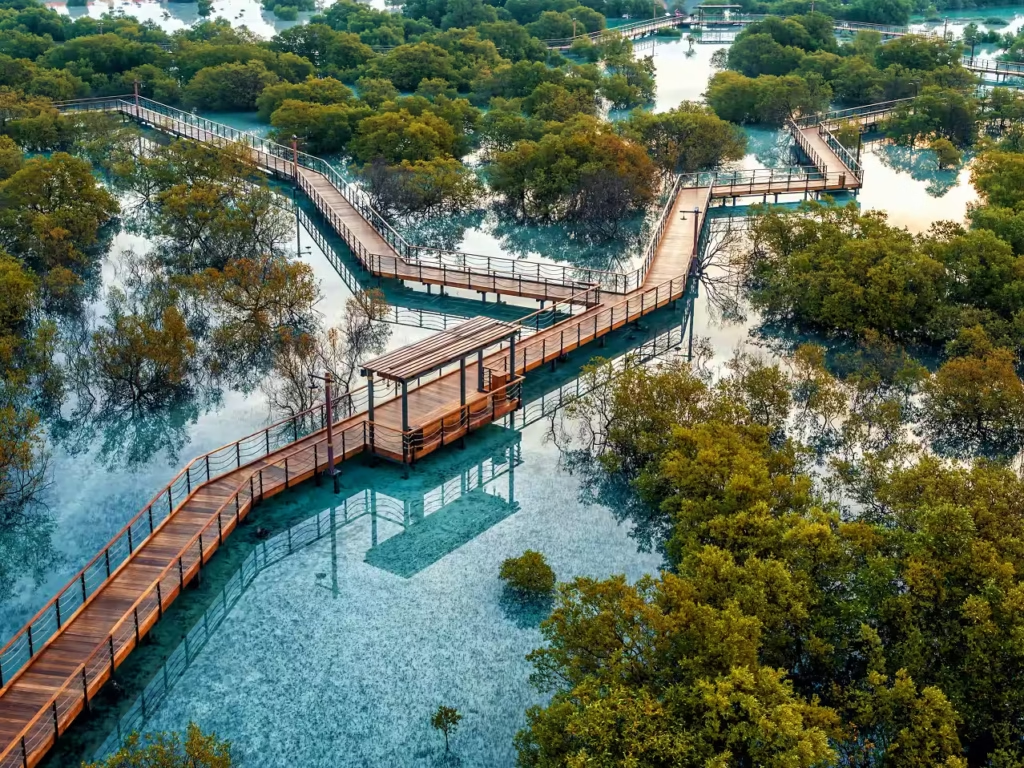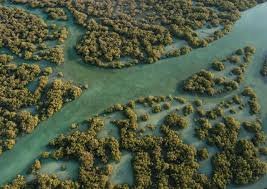Abu Dhabi, the capital of the United Arab Emirates, is leading a remarkable effort to restore and protect its coastal environment through extensive mangrove restoration projects. Mangroves are essential ecosystems that act as natural barriers against erosion, support biodiversity, and capture carbon dioxide. Recognizing their importance, Abu Dhabi has launched initiatives to revive and expand these crucial coastal forests.
Why Mangroves Matter
Mangroves play a vital role in maintaining coastal health. Their thick roots stabilize the shoreline, preventing erosion and reducing the impact of storms. Additionally, mangroves serve as nurseries for various marine species, offering a safe habitat for fish, crabs, and shrimp. Birds and other wildlife also rely on mangroves for shelter and nesting grounds.

One of their most significant contributions is their ability to store carbon. Mangroves absorb and trap large amounts of carbon dioxide, making them valuable in the fight against climate change. By restoring these forests, Abu Dhabi is not only protecting its environment but also contributing to global climate goals.

Abu Dhabi’s Commitment to Mangrove Restoration
The Emirate has committed to planting millions of mangrove trees as part of its sustainability agenda. Initiatives led by the Environment Agency – Abu Dhabi (EAD) aim to expand mangrove cover across the coastline. Advanced technologies like drones and satellite monitoring are used to identify suitable planting areas and track the progress of restored mangroves.
In partnership with local and international organizations, EAD has launched large-scale restoration projects. These efforts align with the UAE’s National Climate Change Plan and contribute to the country’s pledge to achieve net-zero emissions by 2050.

Community Involvement and Awareness

Abu Dhabi encourages community participation in its mangrove restoration efforts. Schools, universities, and corporate groups often take part in organized planting events. These initiatives educate participants on the ecological importance of mangroves while fostering a sense of environmental responsibility.
Furthermore, eco-tourism activities, such as guided kayak tours through mangrove forests, offer visitors a chance to experience these ecosystems up close. Many tourists and residents find these experiences both educational and relaxing.
Technology and Innovation in Restoration
Abu Dhabi utilizes cutting-edge technologies to optimize its restoration efforts. Drone technology, for instance, is used to plant mangrove seeds in inaccessible areas. These drones can cover large spaces in a short time, significantly speeding up the planting process.
Satellite imaging and remote sensing provide data on mangrove health, growth patterns, and surrounding environmental conditions. This information helps scientists make informed decisions on where and how to expand restoration efforts.
Success Stories and Future Plans
Several mangrove restoration projects in Abu Dhabi have already shown impressive results. Areas like Jubail Mangrove Park and the Eastern Mangroves have flourished, becoming thriving ecosystems. These restored mangroves attract diverse wildlife, offering a sanctuary for native and migratory species.
Looking ahead, Abu Dhabi plans to further expand its mangrove cover by planting additional trees along its coastline. Partnerships with research institutions will continue to ensure that restoration techniques remain effective and sustainable.
The Global Impact of Abu Dhabi’s Efforts
Abu Dhabi’s commitment to mangrove restoration serves as an inspiring example for other coastal regions facing environmental challenges. By sharing its expertise and collaborating with international conservation programs, the Emirate is contributing to global efforts to combat climate change and protect biodiversity.
The success of these projects also highlights the importance of government support, scientific research, and community engagement in environmental conservation. As mangrove forests continue to grow, they will provide lasting benefits for both the environment and future generations.
Conclusion
Mangrove restoration in Abu Dhabi is a powerful reminder of how nature can heal when given the opportunity. With its ongoing efforts to protect these coastal forests, the Emirate is not only safeguarding its own shores but also making a meaningful contribution to the global fight against climate change.
Through innovation, collaboration, and dedication, Abu Dhabi’s mangrove restoration projects stand as a model for sustainable environmental management. As more trees are planted and ecosystems restored, the future looks greener and more resilient for all.
Also read: Inside Masdar City: How It’s Leading the Way to Net-Zero Emissions














